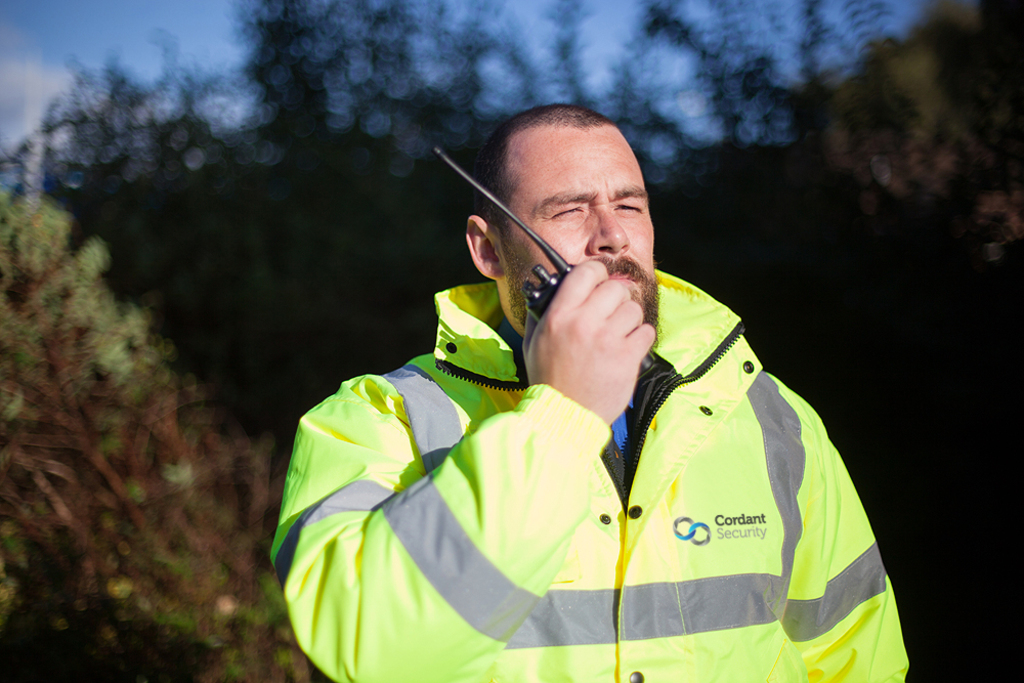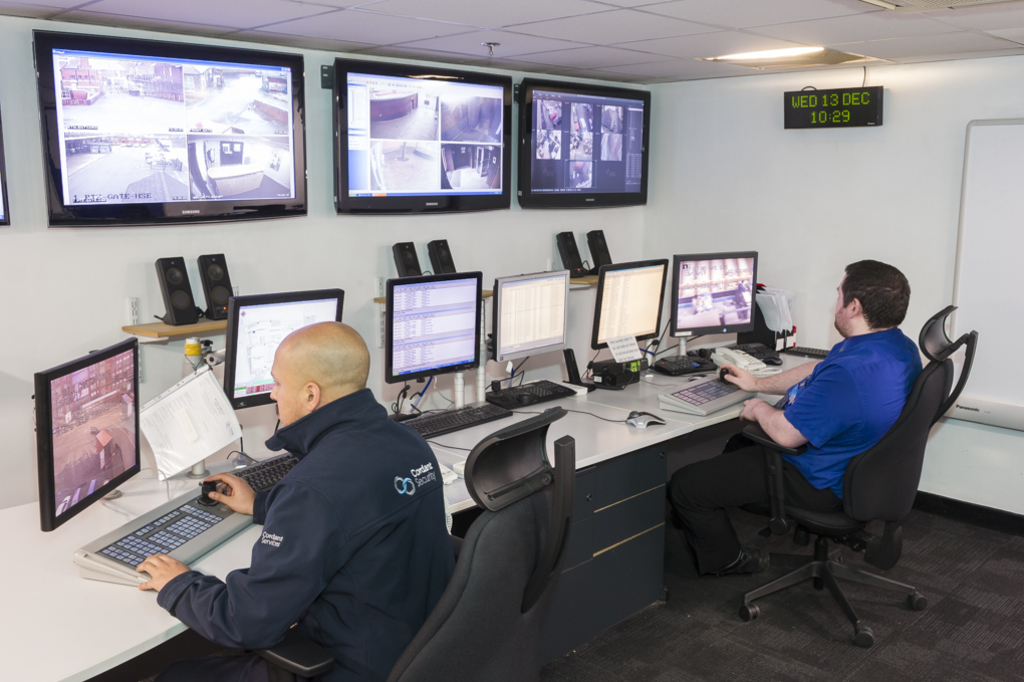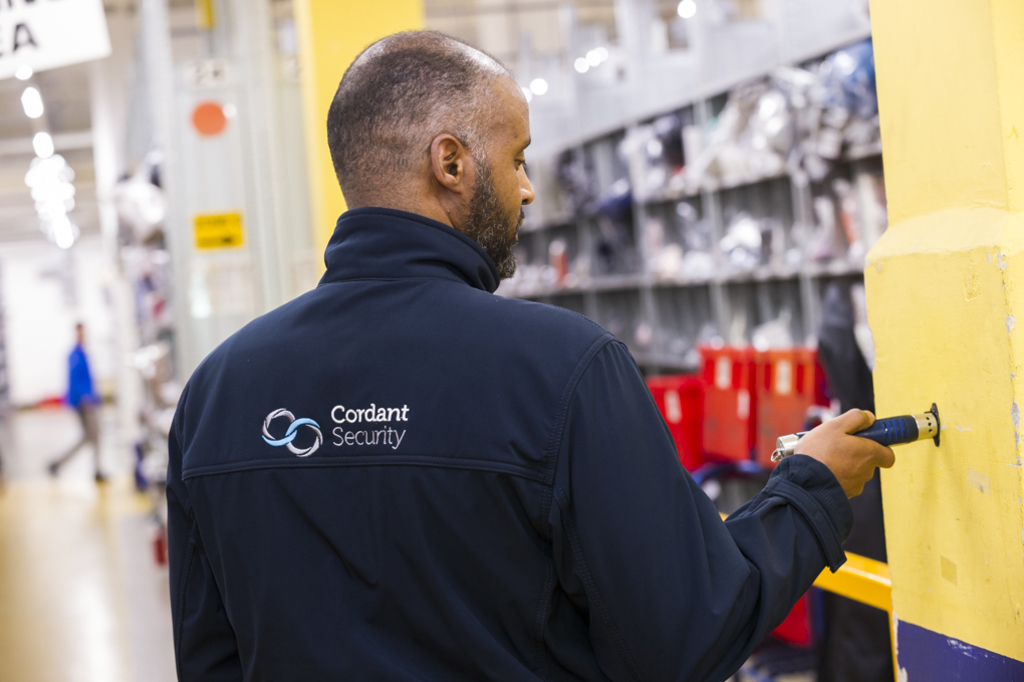
Brian Sims
Editor

Brian Sims
Editor
With the security industry offering so much more than what is traditionally expected, close collaboration with the client ensures that both parties can get the most from the partnership, says Brendan Musgrove.
THE SECURITY industry has rapidly evolved over recent years and it now incorporates a wide number of different aspects on top of what an outsider would view as traditional security. I am a firm believer that collaboration and communication with your client is absolutely vital in order to get the most out of the wide-ranging security solutions now on offer.
It’s good to talk
At the very beginning of the partnership, it is important to work as closely as possible with your client to ensure you understand their requirements, but more significantly whether they understand their own set of requirements for the contract. If the latter is not achieved, the client is likely to receive somewhat of a vanilla security solution that doesn’t hit the mark.
These types of decisions will have a huge bearing on how the contract is delivered. Take something as simple as the uniform the officer wears on a daily basis – if a retailer’s top priority is loss prevention then the security supplier may opt to issue a high impact image with tactical vests etc. This would act as a deterrent; however, it may not be congruent with the image the retailer is trying to convey to its customers. Therefore, if a retailer highlights customer service as their key consideration, the security provider may opt for a softer look, such as a blazer.
This logic also applies in other environments where there are conflicting aims that need to be decided upon –when working alongside a logistics or fulfilment company, for instance. If you are supplying a security solution in a warehouse or distribution centre where multiple vehicles are arriving and departing throughout the day, only by understanding the client’s key requirements will you deliver true value for money. A higher number of vehicle and people searches will undoubtedly reduce losses to the business, however on the flip side, this activity will impact the flow rate across the facility. Therefore, you must establish what the customer truly wants before commencing work, especially as this will have a bearing on the resources required too.
Of course, these priorities do not have to be mutually exclusive, but there does have to be an order of priority. In addition, it is worth noting that any client brief does not have to be fixed across their entire portfolio. A retail chain may vary its stance depending on location, the characteristics of any building, or the time of year too.
The changing retail calendar
For example, a retailer’s requirements will undoubtedly change towards the end of each year. There is no doubt that the additional footfall and volumes created by Christmas shopping and the recruitment of a large number of temporary staff creates a greater risk of theft both by members of the public and employees.
Earlier this year, the British Retail Consortium’s (BRC) Retail Crime Survey 2019 revealed that the total cost of crime and crime prevention for retailers was £1.9 billion last year, up 12% from the previous year (£1.7bn). The direct costs of crime included a £700 million loss arising from customer theft, a 31% rise on the previous year. Some of this can been explained by an increase in highly sophisticated criminal gangs that are targeting high street retailers. These groups are extremely skilled at distracting staff and often move from area to area to avoid detection.However increasingly there is also a problem with employee theft – and you can expect there to be a correlation when a large number of temporary staff are recruited to help businesses navigate the busy ‘peak period’.
In store, it is not unusual for some of these thefts to take place at the checkout. Due to the nature of their work, the cashier has tremendous control over what happens at a manned checkout and this is why knowledgeable retailers are focusing their resources here.For some of our retail customers we are using advanced video analytics at the checkouts to highlight unusual behaviour such as covering bar codes and not scanning products.
Complex settings
In the warehouse the problem can be more complex with employees finding ever smarter ways of concealing items when leaving the building. Thisis a constant problem particularly with the increase in the use of seasonal staff employed to pick and pack during peak periods. Some seasonal staff tend to work across several warehouses in a region and are able to identify the least secure. Those with criminal intentions will exchange information and tactics and sometimes work in collaboration to successfully smuggle goods out of the warehouse.
The challenge for companies is that inevitably all their staff tend to become very familiar with the buildings they are working in and the security measures that are in place. They have first-hand knowledge of how the manned patrols operate, where the technology such as CCTV is located, and where the valuable stock is located. All this makes it relatively easy for a potential thief.
With a high number of staff employed in many warehouses it may be impracticable or undesirable to search everyone. Instead our guards use their knowledge to spot tell-tale signs of theft, such as packaging having been interfered with, in order to focus in on certain problem areas and/or staff groups. This can then lead to targeting of individuals for pat-down or more thorough searches, typically at breaks or at the end of shifts.
Searches can be a sensitive issue, and cultural differences can also make searching problematic. While all employees will have been informed during their induction of the scope of an organisation’s search policy, trained security guards are still invaluable in dealing with what can be sensitive situations.
To best manage the peak period, it is vital for security companies to work in cooperation with their customers to discuss forecasted volumes (moving either in the warehouses, or off the shelves in the stores), and determine how best to manage resources. This could involve taking the decision to scale-up the security solution in line with those forecasts.
Prioritising employee safety
As we work closely with retailers to minimise loss caused by theft of stock, it is clear that employee safety is still the number one priority. In the recent BRC report, it states there were 42,000 reported violent incidents across the industry, with 115 colleagues being attacked every day, including weekends. Meanwhile, the total number of incidents of abusive behaviour surpassed 100,000 for the first time. The BRC claims there were three main triggers behind the rise of violence towards staff – the intentional use of violence to assist with theft; as a response to age-related sales challenges; and by intoxicated criminals.
Collaboration is also vital in order to create a tailored security solution that is designed to keep employees safe when at work, as well as when they are leaving the premises.
For instance, an increasing number of retail jobs now require staff to work outside regular business hours, whilst an increasing number of the roles are based at remote retail parks instead of on well-lit and busy high streets. Therefore, it is not enough just to provide a secure in-store environment, so any security solution must also cover areas such as car parks, alley ways or courtyards which can seem very daunting for a lone person, especially at night. In simple terms, I believe that a retailer’s responsibility does not end at the front door.
It is also important for employers to understand there are real risks to employeesand that they are legally required to provide a safe and secure working environment. They need to consult with and employ security experts to ensure that they behave both legally and morally. Also, from a business perspective, any form of incident or attack on an employee can have a severely detrimental effect on morale, productivity and even brand reputation.
In conclusion
At Cordant Security, we believe the most important part of any client relationship is the initial two hours where we closely consultant with them. A customer - whether a retailer or otherwise - must be explicit when outlining what is important to them, and for those that state “everything”, we will use our knowledge and experience to shape a service that delivers the greatest benefits.
Any decent security company must be willing to closely collaborate with their customers to fully understand their needs and build a commensurate solution with clear deliverables. Any model must also have the ability to develop and change as the needs of the business flex, which for retailers will be typically towards the end of the year. If this process is not followed, it is highly likely that the security solution is not fit for purpose and lasting client relationships will not be built.
Brendan Musgrove is managing director of Cordant Security. For more information, visit www.cordantservices.com



Chevron House
346 Long Lane
Hillingdon
Uxbridge
UB10 9PF
UNITED KINGDOM
01895 201 800